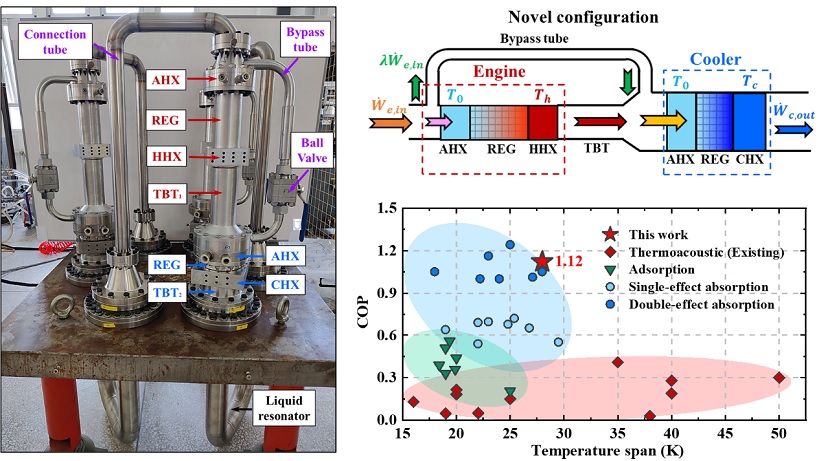
Figure. The developed novel heat-driven thermoacoustic refrigerator and its performance
Cell Reports Physical Science: https://doi.org/10.1016/j.xcrp.2024.101815
Applied Physics Letters: https://doi.org/10.1063/5.0181579
Scilight: https://doi.org/10.1063/10.0024392
NEWS